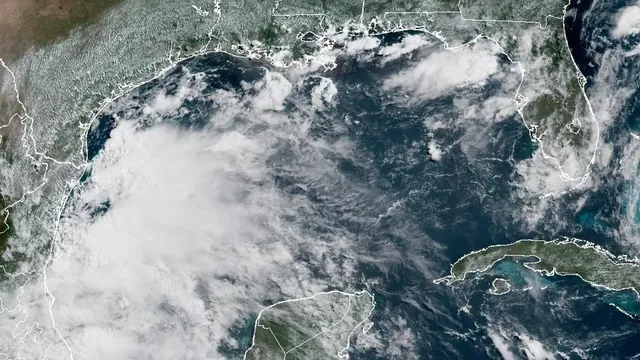
Hurricane Flossie develops as Mexico prepares for floods and mudslides
2025-07-02 13:46- Hurricane Flossie formed on June 30, 2025, off Mexico's southwestern coast with maximum sustained winds of 130 kph.
- Tropical storm warnings were issued for areas along the coast as the hurricane is expected to bring heavy rainfall and significant risks of flooding.
- Local officials urged residents to prepare for potential life-threatening conditions as Flossie approaches.
Express your sentiment!
Insights
On June 30, 2025, Hurricane Flossie formed off the southwestern coast of Mexico, prompting local officials to issue warnings for potential flooding and mudslides. This system, initially a tropical storm, was observed strengthening with maximum sustained winds of 130 kph (80 mph) as it moved north-northwest at a speed of 10 mph. Positioned approximately 280 kilometers south of Manzanillo, the hurricane's trajectory indicated it would skirt the coastline for several days, although its center was expected to remain offshore. As a result of Flossie's development, the Mexican government issued a tropical storm warning along the southwestern coast from Punta San Telmo to Playa Perula. In addition, a tropical storm watch was put into effect from Zihuatanejo to Cabo Corrientes, signaling that tropical storm conditions could arise within a couple of days. Forecasters anticipated that Flossie would produce heavy rainfall in parts of Oaxaca, Guerrero, Michoacán, Colima, and Jalisco, with predictions of up to 150 mm (6 inches) of rain which could heighten the risk of flooding and mudslides in steep terrain. The remnants of Tropical Storm Barry were also affecting other regions of Mexico, specifically the Gulf coast, where heavy rains were reported after it came ashore as a tropical depression with maximum winds of 30 mph. This combination of weather systems posed a significant challenge, as regions previously inundated could be susceptible to more intense and hazardous conditions due to ongoing rainfall and potential storm impacts. The U.S. National Hurricane Center was closely monitoring Flossie's progression, advising that life-threatening flooding and mudslides were possible, especially in areas with steep landscapes. The significant swells generated by the hurricane were also expected to impact beaches along the southwestern coast of Mexico, contributing to the danger of rip currents. Authorities urged residents and visitors alike to stay vigilant and prepared for rapidly changing conditions in the days ahead, as the Eastern Pacific hurricane season continued to unfold.
Contexts
Hurricane preparedness is crucial for ensuring the safety and well-being of communities in Mexico, particularly during the hurricane season, which typically runs from June to November. Understanding the risks associated with hurricanes, including high winds, heavy rainfall, floods, and storm surges, is essential for both individuals and families residing in vulnerable areas. The importance of developing a comprehensive action plan cannot be overstated, as it can significantly reduce the potential impact of a hurricane on lives and property. Individuals and families are urged to stay informed about hurricane forecasts and warnings issued by meteorological authorities, utilizing reliable sources for timely updates and communication regarding impending storms. To enhance preparedness, residents should create an emergency kit containing essential supplies such as non-perishable food, water, medications, flashlight, batteries, first aid supplies, and important documents. It is recommended that each household prepare enough supplies to last for at least 72 hours, as power outages and disrupted services may follow a hurricane. Furthermore, plans should be made for safe evacuations, including identifying reliable transportation and predetermined safe locations where families can gather if they need to leave their homes. Engaging in community preparedness initiatives can also foster a sense of collaboration and support among neighbors, crucial during emergencies when assistance may be required. In the context of disaster response, it is important to recognize the role of local authorities in coordinating evacuation plans and shelter arrangements. Citizens should familiarize themselves with local evacuation routes and designated shelters to ensure efficiency and safety during an emergency. Awareness campaigns and training programs can empower citizens to respond effectively to emergencies, promoting skills in first aid, basic survival techniques, and understanding hurricane-related risks. Schools and workplaces should implement hurricane response drills to prepare individuals for real-life scenarios, thereby minimizing panic and confusion when an actual hurricane approaches. Ultimately, the collaboration between government agencies, local communities, and families is vital to bolster resilience against hurricanes in Mexico. By prioritizing preparedness measures, individuals can make informed decisions and reduce vulnerabilities before, during, and after hurricane events. These preparedness guidelines are essential for protecting lives, preserving property, and aiding in quicker recovery efforts following hurricanes. Responsibility lies within each member of the community to take proactive steps for their safety and the safety of others, ensuring that they are well-prepared to face the threats posed by hurricanes.